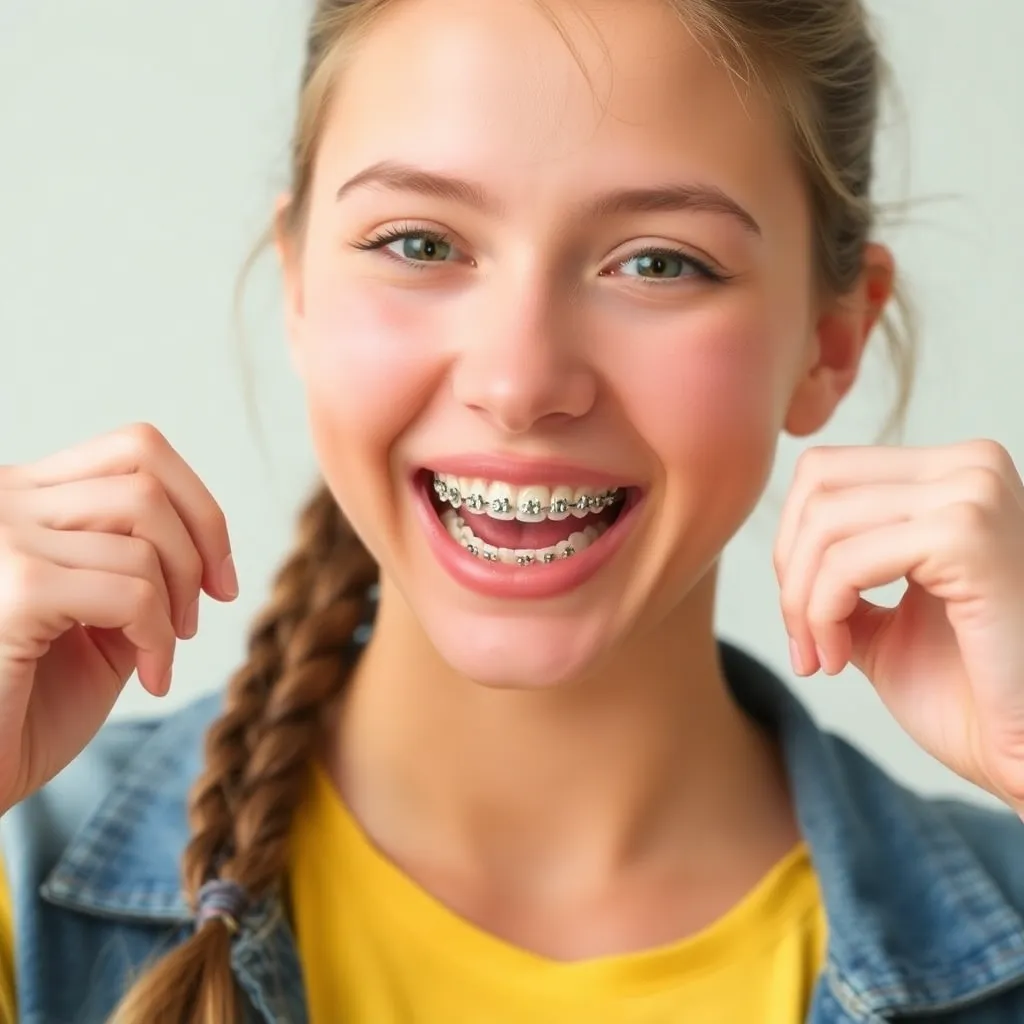In recent months, a new trend has emerged among teenagers: the use of fake braces, often purchased online from China. These non-functional, decorative braces are advertised as a way to achieve a “cool” or “edgy” look, without any of the actual orthodontic work. However, this seemingly harmless fashion statement is raising concerns among dental professionals, who warn that teens may be unknowingly putting their teeth at risk for serious damage.
The Appeal of Fake Braces
Fake braces, sometimes referred to as “cosmetic braces,” are typically made of plastic or rubber and can be bought cheaply through online marketplaces. They come in a variety of colors and styles, and some even claim to mimic the appearance of real metal braces. Many teens, particularly those who are influenced by social media trends, see fake braces as a way to fit in with certain “aesthetic” trends, popularized by influencers or celebrities.
The idea is simple: wear them for a period to achieve a fashionable look, and then remove them. However, what may seem like a harmless trend can have unintended consequences for dental health.
How Fake Braces Can Damage Teeth
- Uncontrolled Pressure on TeethOne of the most significant risks associated with fake braces is the pressure they can exert on the teeth. Even though these braces are not designed for real orthodontic treatment, they can still push against the teeth in a way that causes misalignment or discomfort. In some cases, prolonged pressure could potentially lead to tooth movement, which could require professional intervention to fix.
- Damage to Gums and Soft TissueFake braces often have poorly fitted components that can rub against the gums and the inside of the mouth. This can lead to painful sores, irritation, or even infections. If these irritations are left untreated, they can cause long-term damage to the oral tissues.
- Increased Risk of Tooth DecaySome of these fake braces, especially those made from rubber or plastic, can trap food particles and bacteria in the mouth. This can create a breeding ground for plaque buildup, which increases the risk of cavities and gum disease. Unlike real braces, which are regularly adjusted and monitored by a dentist, fake braces don’t offer any protection against oral health issues.
- Difficulty Maintaining Oral HygieneWith fake braces, cleaning the teeth becomes more difficult. Braces, whether real or fake, can create more surfaces where food and plaque can accumulate, leading to hygiene challenges. Teens may find it harder to brush or floss properly, which could result in further oral health complications like gum disease or cavities.
- False Sense of SecurityMany teens view fake braces as a “cool” accessory, without understanding the potential harm they can cause. Because they are not designed or tested for safety, fake braces don’t come with any instructions on how to wear them safely or how to remove them properly. Some teens may end up leaving the braces on too long, or they may cause irreversible damage without even realizing it.
What Dentists Say
Dental professionals are urging parents and teens to think twice before buying fake braces. According to Dr. John Smith, a pediatric dentist, “While it might seem like a harmless trend, fake braces can lead to serious oral health problems. Unlike real orthodontic devices, these fake braces are not made with the same materials or design considerations. They are not safe for long-term wear and can do more harm than good.”
Dr. Smith also emphasizes that orthodontic treatment should always be supervised by a licensed professional, and teens should never attempt to alter their teeth without proper guidance.
What Teens Can Do Instead
If a teen is interested in improving the appearance of their teeth or achieving a “braces-like” look, it’s much safer to consider professional orthodontic treatment. Modern orthodontics offers a variety of options, including clear aligners, that are both effective and discreet. These treatments are designed to move teeth safely and with the guidance of a professional.
For those who simply want to embrace the aesthetic of braces without making a permanent commitment, there are safer alternatives such as removable “braces-inspired” accessories that are designed for cosmetic purposes only. These options don’t involve any pressure on the teeth and can be safely worn as part of a fashion statement.
Conclusion
While fake braces may seem like an innocent trend, they pose significant risks to the health and well-being of young people’s teeth and gums. The desire to look “cool” or “on-trend” should never come at the cost of long-term dental health. Teens should be educated about the potential consequences of wearing fake braces and should always seek professional advice when considering any changes to their orthodontic care. At the end of the day, the best way to achieve a healthy, beautiful smile is through proper dental care and professional treatment, not risky fashion fads.

